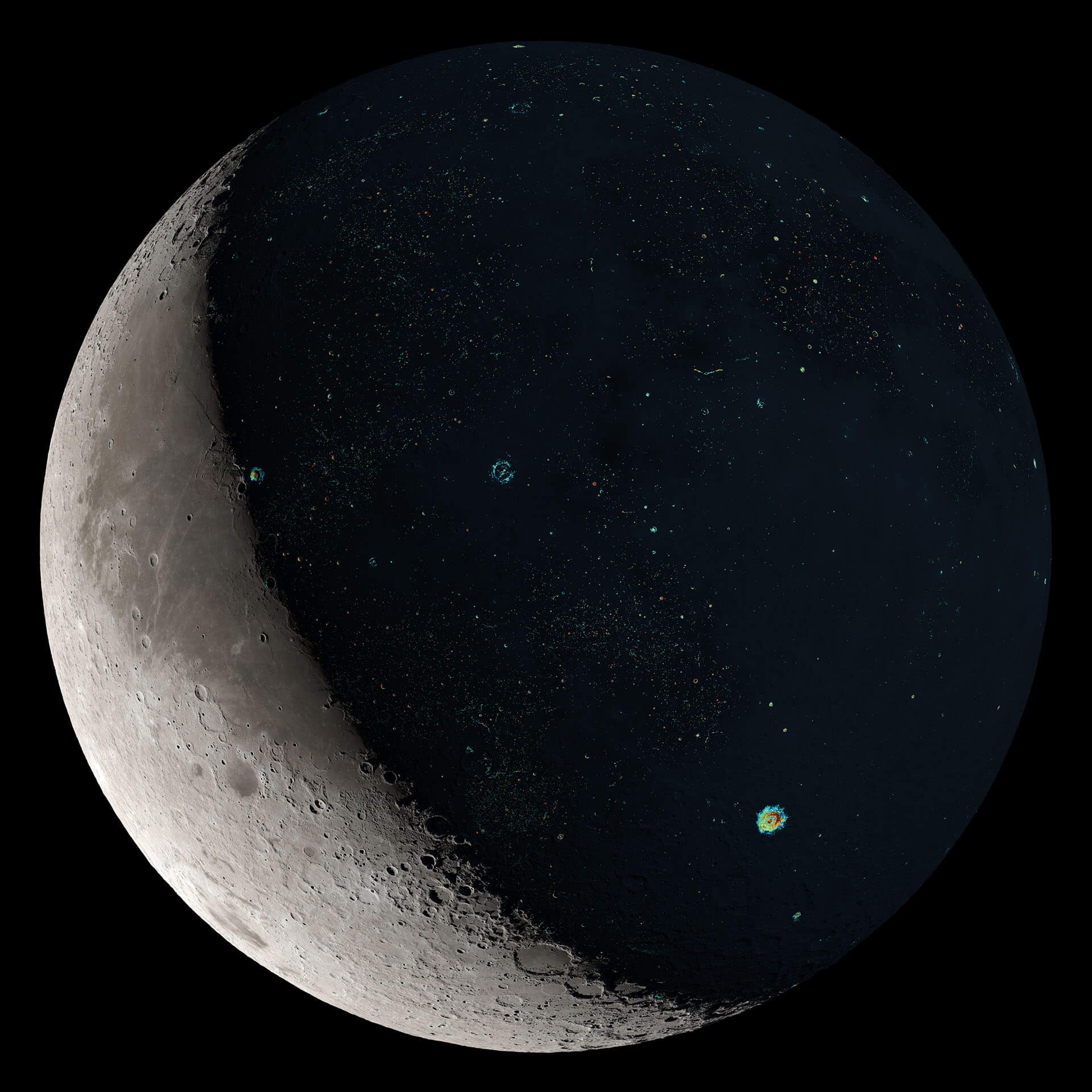Approximately 290 million years ago, the intensity of the fall of asteroids on the Earth and the Moon has increased significantly, so called asteroid bombardment, which may be due to the catastrophic collision that occurred in the same period in the main asteroid belt located between the orbits of Mars and Jupiter. The results obtained challenge the current understanding of the history of our planet and explain the riddle of the lost ancient craters on its surface.
Our study shows that at the end of the Paleozoic era there was a sharp increase in the number of asteroids crashing into the Earth and the Moon. The frequency of their falls increased by 2.6 times.
-Sarah Mazrui, lead author of the study at the University of Toronto (Canada)
Scientists for several decades trying to determine how often guests from space fall to Earth, mainly based on the study of craters and the age of rocks around them. However, the problem of this method, as previously thought, is erosion and other geological processes that erase evidence of such events from the surface of our planet. In particular, it was suggested that they are the cause of the almost complete absence of traces of the effects of asteroids over 290 million years old.
To circumvent the obstacle of the alleged erasing of the records of falls, the scientists turned their attention to the Moon, because, firstly, the ratio of the effects throughout history on both bodies should be similar, and, secondly, our satellite is devoid of plate tectonics and erosion, which gradually destroy the craters.
The only obstacle was to find an accurate and reliable method for dating large craters on the moon.
-William Bottke, a co-author of the study from the Southwestern Research Institute (USA)
The DLRE instrument on the NASA orbiter Lunar Reconnaissance Orbiter (LRO), which measures the thermal radiation of the surface of our satellite, helped in this. During the moonlit night, larger stones emit more heat than thin lunar soil. By mapping the distribution of large boulders and calculating the rate of their decay under the influence of continuous rain from tiny meteorites, planetologists revealed a connection between the number of large stones and the age of the crater around which they are scattered. This allowed them to identify all craters younger than a billion years old.
Comparing the age and the number of craters on the Moon with craters on Earth, scientists made an amazing discovery, as the indicators turned out to be extremely similar, which challenged the idea of missing craters on our planet.
This means that the Earth has fewer old craters in its most stable regions, not because of erosion, but because of the lower intensity of the fall of asteroids, which began to increase dramatically 290 million years ago.
-William Bottke
Scientists have used an incredible line of evidence to prove their theory. They explored the long-extinct diamond volcanoes, called kimberlite pipes, which are similar in shape to carrots and extend a couple of kilometers into the planet. The results showed that the kimberlite pipes formed during the last 650 million years in erosion-resistant areas and in the same places where the remaining impact craters were found are mostly intact.
This means that the craters in these regions should have been preserved if they were there.
-Sara Mazrui
The team’s findings are important in studying the history of life on Earth, which focuses on major extinction events and the rapid evolution of new species. Although mass extinctions can have many causes, the researchers note that the fall of the asteroids most likely played a major role. In particular, dinosaurs settled our planet about 250 million years ago and from the very beginning were particularly vulnerable to significant catastrophic impacts from space than earlier groups of animals.
It may be fair to say that this date was fateful for dinosaurs and their extinction was almost inevitable, given the significant increase in the number of large space stones colliding with Earth.
-Thomas Hern, co-author of the study from the University of Southampton (UK)
Earth's history of the asteroid bombardment
Click To Tweet
The post Earth’s history of the asteroid bombardment appeared first on Upcosmos.com.
